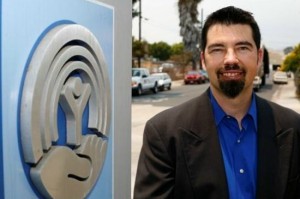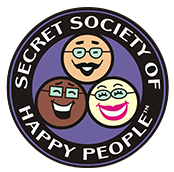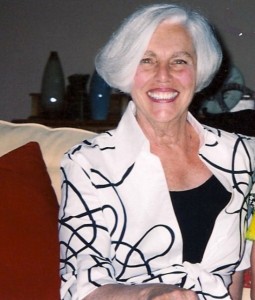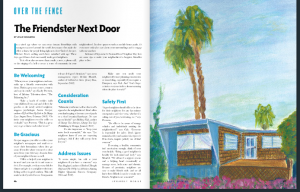
United Way’s Charles Caldwell has a lead role in the Power of Partnership Initiative for Santa Barbara, an ambitious, collaborative effort involving many community organizations. (Lou Fontana / Noozhawk photo)
With a business card that touts his credentials as “Master of Mythology, Captain of Results,” it’s no surprise that United Way‘s Charles Caldwell has been tasked with heading up one of Santa Barbara’s “most ambitious and audacious” planning efforts to date.
Leslie Dinaberg: Can you explain what the Power of Partnership Initiative is?
Charles Caldwell: The Power of Partnership Initiative is a collaborative effort by many different organizations to see if we can create a long-term plan for children, seniors and families. Is there a way to work where we can come together and we can find some agreement and prioritize some of the most important things for us to focus on as we move down the road?
… For most organizations and individuals who work in the field, the future looks a little daunting or it looks challenging for a variety of different reasons. Less and less dollars … plus the very nature of the issues that are affecting children, families and seniors are growing more and more complex. Once upon a time you could have a single need or a single issue and then there would be one group that could fill that need and the child and the family would get back up on its feet and be ready to go. However, most of the systems we have in place were really built at a time of a more homogenous society where there weren’t the same kinds of needs as we have now.
LD: That’s an interesting way of looking at it.
CC: Our system as a whole has had some difficulty in being able to adapt and to focus on those changing needs, even though there have been Herculean efforts to do so.
… As funding is getting tighter … the pie is getting cut thinner, so as that happens, how is our community supposed to maintain its basic infrastructure and adapt to the changing future?
LD: So you initially addressed these issues as part of United Way’s internal planning with nonprofits and other stakeholders?
CC: Right. What they said is, “We think there needs to be some system for planning as a way of doing and we need a neutral facilitator who is helping with our strategic planning process.” … They said, “Somebody needs to get all these groups together so we can communicate as we look towards the future.”
And we said, “Who should do that?” The first person said, “United Way,” and then the next person said, “Yeah, United Way should do that,” and the next person said, “Yeah, United Way should do that.”
I was sitting in the back of the room with our president/CEO, Paul Didier, and we both looked up astonished because we weren’t holding these to jump into some giant community process.
… I get to the family session, very similar conversation. … Seniors same thing. So we went to our board and spoke to them, and they said, again, we weren’t looking to take this on, but it’s very interesting, go out and talk to community leaders, see what they think.
… It turned out, person after person–Bill Cirone, Brian Sarvis and Ron Werft– said, “this sounds like something our community really needs, what can I do to help?” We kept meeting with people and they kept saying the same thing. We met with Salud Carbajal, and Marty Blum and Paul Cordeiro down in Carpinteria and again and again they said, “this is audacious, this is challenging, but we need it in some way for approaching the future.”
LD: It sounds like an echo of what we’ve been hearing for years about the need to work together, but to actually take on the project is something else entirely.
CC: What became apparent from the beginning was that we needed to have a different kind of plan. We began to do research around the county … What began to become to become clear was that we needed to focus on a future plan that would be aspirational, that would be based on building on our community’s strengths rather than looking at what are the greatest needs, what are the greatest deficits, what are the gap based issues that we have to deal with.
…. United Way will pull the community together, but this is not a United Way plan, this is a community plan. To make that happen there had to be other funders and foundations who were willing to join in … pretty soon the Orfalea Fund came on board, the Santa Barbara Foundation, Hutton Foundation, the Bower Foundation, some of the real kind of proactive, great community foundations stepped up and said, “yeah, that’s great, let’s do this.”
LD: And one of the ways people can give their input is through filling out the community survey at http://www.partnershipsb.org/index.php?pr=Survey.
CC: Yes. And as we have that vision, we have those goals, then we begin to prioritize those goals and to develop strategies to achieve those goals, not over the next couple of years, but over ten years.
LD: It sounds really challenging.
CC: My conviction, as we’ve crafted this and we’ve talked to different individuals, is that the people out there, as well as the ones who work in the field, really want to believe that we can make measurable improvements on some of these issues.
Hopefully most people already know that there are so many wonderful different organizations and individuals that are just doing a tremendous amount of work in our community and that’s part of what makes our community so wonderful. … Yet literally billions of dollars are spent in the county, between private and public sources, to impact the lives of people and they do.
However when you step back and look at the broader picture, almost nobody that we’ve talked to has said that the basic conditions in our community are better than they were five-ten-15 years ago. What I have heard from individuals is if we’re doing all this activity, if we’re spending all this money, we’re impacting all these people and we’ve got the results to show that we’re doing it, all these groups do, and yet you look around and we’re not measurably improving some of these issues.
We need to rethink how we’re going about this–and that’s a little bit where we’re at.
LD: Has there been any discussion that this may entail some sacrifice?
CC: There has. I think that you’ve really put your finger on one of the greatest challenges for this initiative, which is can our community lift its viewpoint to those children and families or seniors and families that are out there and say what is the best thing for them? … People who work in the field said, “we understand that this is challenging and if we were able to do this, that there are some threats inherent to this. But you have to understand that those threats are already there. That funding is already being sliced thinner and thinner and thinner.”
… So it is absolutely a challenge and we as a community will be able to meet that challenge in direct relationship to the emphasis that we place on improving the lives of those people out there.
LD: That makes a lot of sense. This program is really interesting, but I also want to talk to you about yourself. Have you always worked in the nonprofit world?
CC: No, when I first came here I worked at the Earthling Bookshop; I was one of the managers of the Earthling Bookshop for about six, seven years.
LD: I miss the Earthling.
CC: I know. It still brings a sigh and a tear to almost everyone I talk to. And partly just for their feelings and partly for our changing community and that was an emblem in a sense of what Santa Barbara used to kind of hold a little bit more.
LD: What else do you do when you’re not working?
CC: A lot of my time is spent either through work or helping out with my mom, Doris, who is 82. She lives in town and she’s been living independently even after a heart attack and stroke. … I’ve been helping her out with a wide variety of needs. Outside of that, I have a close-knit group of friends that I’ve known for most of my time here.
LD: If you could pick three adjectives to describe yourself, what would they be?
CC: Passionate, original and authentic.
LD: If you could be invisible anywhere in Santa Barbara, what would you do?
CC: Go right up on stage at the bowl when one of my favorite bands or singers is performing…like Tony Bennett, Steely Dan, or the Raconteurs.
Vital Stats: Charles Caldwell
Born: August 19, 1963, in South Pasadena.
Family: Mother and brother both live in Santa Barbara.
Professional Accomplishments: Manager, Earthling Bookstore; Marketing Consultant, New York Times; Director of Special Projects, United Way.
Best Book You’ve Read Recently: The Passion of the Western Mind: Understanding the ideas that have shaped our worldview, by Richard Tarnas
Little-Known Fact: “I love to go fly-fishing in Montana!”
Originally published in Noozhawk on June 10, 2008. Click here to read the story on that site.





